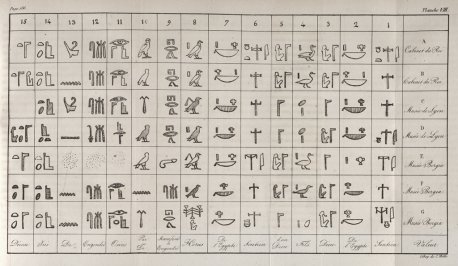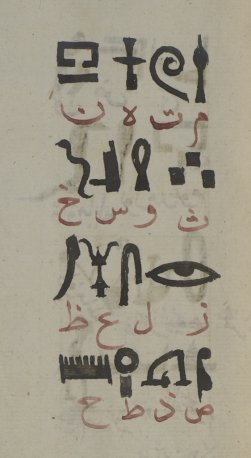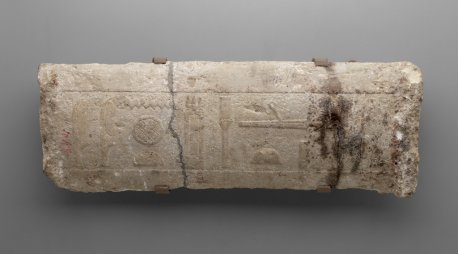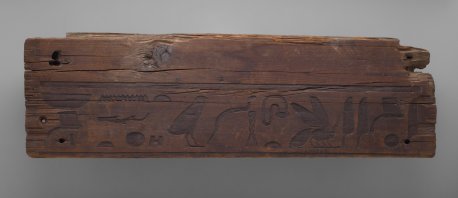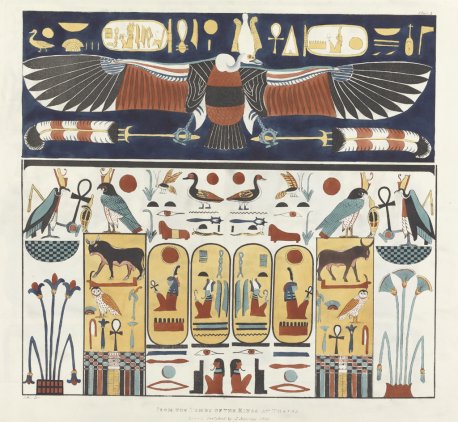Deciphering Ancient Egypt
Deciphering Ancient Egypt [ edit ]
“We see engraved everywhere [in Egypt] innumerable shapes and forms called hieroglyphs, expressing the ancient records of primordial wisdom. Carving many kinds of birds and beasts of a strange world, so that the memory of tradition may be published to succeeding ages, they herald the wishes of kings, fulfilled or simply promised. For not as nowadays did the ancient Egyptian write a set and easily learned number of letters to express whatever the human mind might conceive, but one character stood for a single name or word, and sometimes signified an entire thought.”
— Ammianus Marcellinus XVII, iv, 8—11 (translation of Boas, The Hieroglyphics of Horapollo, p. 103)
If the half-buried monumental temples of Egypt were sufficient to incite the interests of tourists from antiquity to the present, the elaborate carvings that adorn nearly every surface of those temples inspired yet more wonder. For the ancient Egyptians, these hieroglyphic signs and their cursive equivalents wrote the sounds and concepts of their language, and while only a small percentage of the population was literate, the ability to record everything from complex theological treatises to mundane economic transactions provides priceless evidence for this ancient civilization. After more than three millennia of continuous use of the hieroglyphic script and its cursive derivations, the simple connection between a spoken language and hieroglyphs was forgotten by the end of the fifth century ce, at which point the mystical and symbolic nature of the script became its chief characteristics in later tradition. The commonly accepted identification of hieroglyphs as an exclusively “conceptual” rather than phonetic writing system retarded decipherment of the script for a millennium and a half, but early, failed attempts to translate Egyptian hieroglyphs reveal much about the intellectual heritage of ancient Egypt throughout the world.
Before embarking on a journey through the fifteen hundred years during which hieroglyphs could not be properly read, we may pause for a moment to understand how the ancient Egyptians themselves viewed hieroglyphs. The word “hieroglyph,” a Greek term meaning “sacred inscribed sign,” is a striking parallel to the ancient Egyptians’ own designation for their writing system: medu-netcher “words of the gods.” According to one account of creation, the Memphite god Ptah created the world through thoughts and their expression as words. In the Egyptian texts, each of Ptah’s utterances was a “word of the god,” a hieroglyph, which was itself composed of discrete objects. For example, when the Egyptian creator deity brought light into existence—“let there be light!”—the three hieroglyphs contained not only the phonetic signs spelling the word meaning “light, luminous space,” but an extra sign (called a determinative) that represented light itself, a shining sun disk.
From its origins in the late fourth millennium bce, the hieroglyphic writing system was a mixture of phonetic and ideographic (indicating concepts rather than phonemes) signs, with most signs belonging to the former category. The hieroglyphic writing system, although conservative, was never monolithic, and new signs and new uses of earlier signs appear particularly in the New Kingdom and later. Technological change could also lead to the creation of new hieroglyphic signs. For example, the introduction of the chariot into Egypt around 1600 bce spurred the appearance of a chariot hieroglyph. Monumental hieroglyphs are often very detailed, incorporating several different colors and patterns within a single sign; such elaborate carved, and often painted, hieroglyphs become miniature works of art, while retaining their primarily pragmatic and phonetic qualities. Even when used phonetically, however, hieroglyphs never fully lost their potential symbolic value and the Egyptians’ unique writing enabled them to create visual as well as phonetic puns in their texts.
After the decline of pharaonic civilization and the death of the old writing systems, “hieroglyphic” images were seen as an entirely symbolic language that held within it all of the mysteries of the cosmos. But even when the ancient Egyptian scripts ceased to be written, the Egyptian language itself survived in Coptic, written with the Greek alphabet and five additional letters that represent phonemes not present in Greek. Coptic became the language of Christian Egypt and the literature of the Coptic Period preserves genres including biblical texts, monastic rules and sermons, narrative tales, and magical texts. Among this literature are some allusions to earlier pharaonic religious practices, including an “invective” against hieroglyphs. Authored by the famous monk Shenoute (ca. 348–465 ce), this short text vividly describes the ancient hieroglyphs:
“it is prescriptions for murdering man’s soul that are therein, written with blood and not with ink alone—there is nothing else portrayed for them except the likeness of the snakes and scorpions, the dogs and cats, the crocodiles and frogs, the foxes, the other reptiles, the beasts and birds, the cattle, etc.; furthermore, the likeness of the sun and the moon and all the rest, all their things being nonsense and humbug.” (translated by D. W. Young)
